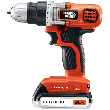Have you ever come across a light bulb in your house that you could quite identify? With the rising popularity of CFLs (or compact fluorescent light bulbs as they are more properly known) this isn't that surprising of a scenario. Is there some way of identifying CFL bulbs from regular incandescent bulbs? That is, without relying heavily on the box? Actually, there are a few ways that you can identify between light bulbs. Keep in mind that some of these will require you to do a little testing, and the others will require a little objectivity.
- Appearance. Strictly speaking, there is no set appearance for a CFL bulb. However, there are enough out there that appear the same way that you can use this as a great guide for identifying CFL bulbs. This general appearance is going to be of two tubes coiled around each other, tapering near the apex to give a similar shape to a regular light bulb. There are other kinds of CFLs that have an appearance of two or three tubes that jut straight out before bending back on themselves, but the first type is more prevalent.
- Heat. One way that you can identify CFL bulbs from incandescent light bulbs is the heat. CFLs produce less heat than their incandescent counterparts. In fact, they produce about 75% less heat than the traditional light bulb. While you could always hold your hand near a light bulb and test its heat that way, it would be better to use a thermometer. Those that are lower in the heat range are more than likely going to be a CFL bulb.
- Longevity. On the average, a CFL will last around 10 times longer than the average light bulb. The only way to really tell if you have a CFL bulb (which doesn't look like one of those described earlier) will be to pay close attention to how often you need to change the light bulbs. If you have a particular light bulb which has not been changed in a very long time, while those around it have, then it could very well be CFL bulb.
- Identifying marks. Many times you can find identifying marks either on a CFL bulb, or if you are lucky, the box they are stored in. These marks are beyond any simple statement that says "CFL" or Compact Fluorescent Light bulb". Often, these markings will say something to the effect of listing a K-rating (or Kelvin Rating) which lists the brightness of the bulb. In addition you may see something along the lines of X Watt = Y Watt. The lower number (X) usually signifies a CFL Wattage which is equivalent to an incandescent bulb's Wattage (Y). If you see these markings, then you are more than likely dealing with a CFL bulb.
Author Bio
Lee Wyatt
Contributor of numerous Tips.Net articles, Lee Wyatt is quickly becoming a regular "Jack of all trades." He is currently an independent contractor specializing in writing and editing. Contact him today for all of your writing and editing needs! Click here to contact. Learn more about Lee...
Caring for Kwanzan Cherry Trees
Have you ever been to Washington, D.C., New York City's Central Park, or even to Japan? If so, then chances are you have ...
Discover More
Hiring a Financial Planner
Are you looking for ways to begin organizing your finances? If so, you may want to consider hiring a financial planner. ...
Discover More
Getting the Best Car Rental
Whether you are going on a long business trip, or simply a weekend getaway a car rental can be a huge help. Not only will ...
Discover More
More Home Improvement Tips
Italian Lighting
Each room needs the right kind of lighting. Try Italian lighting options to add to the beauty of an area.
Discover More
Hanging Lamps
A hanging lamp is a great way to add overhead light to an area. These lamps give a unique and beautiful look to a room.
Discover More
Installing Track Lighting
Track lighting is a wonderful lighting option that you can have in your home. Not only does it provide much needed ...
Discover More

Comments